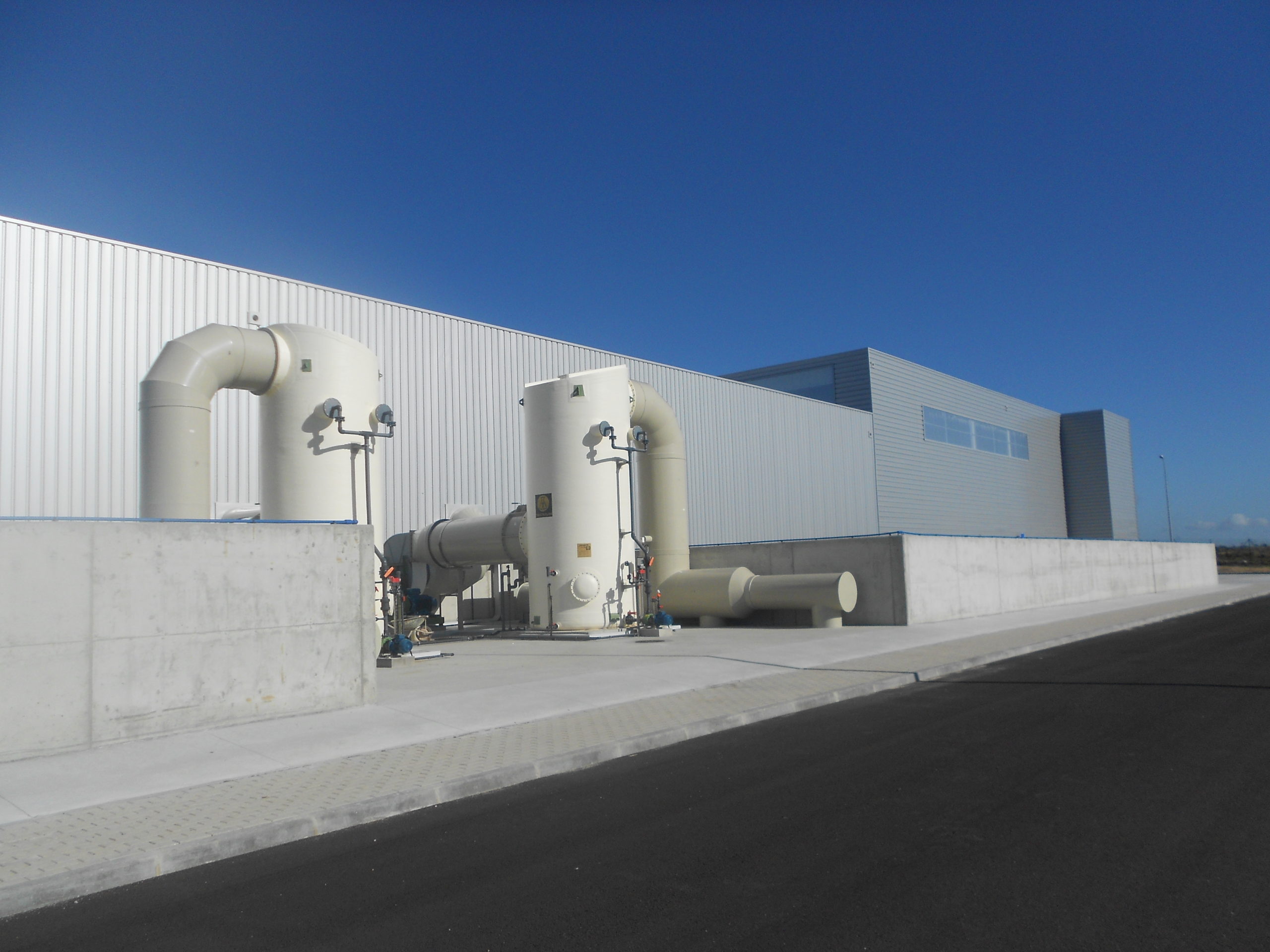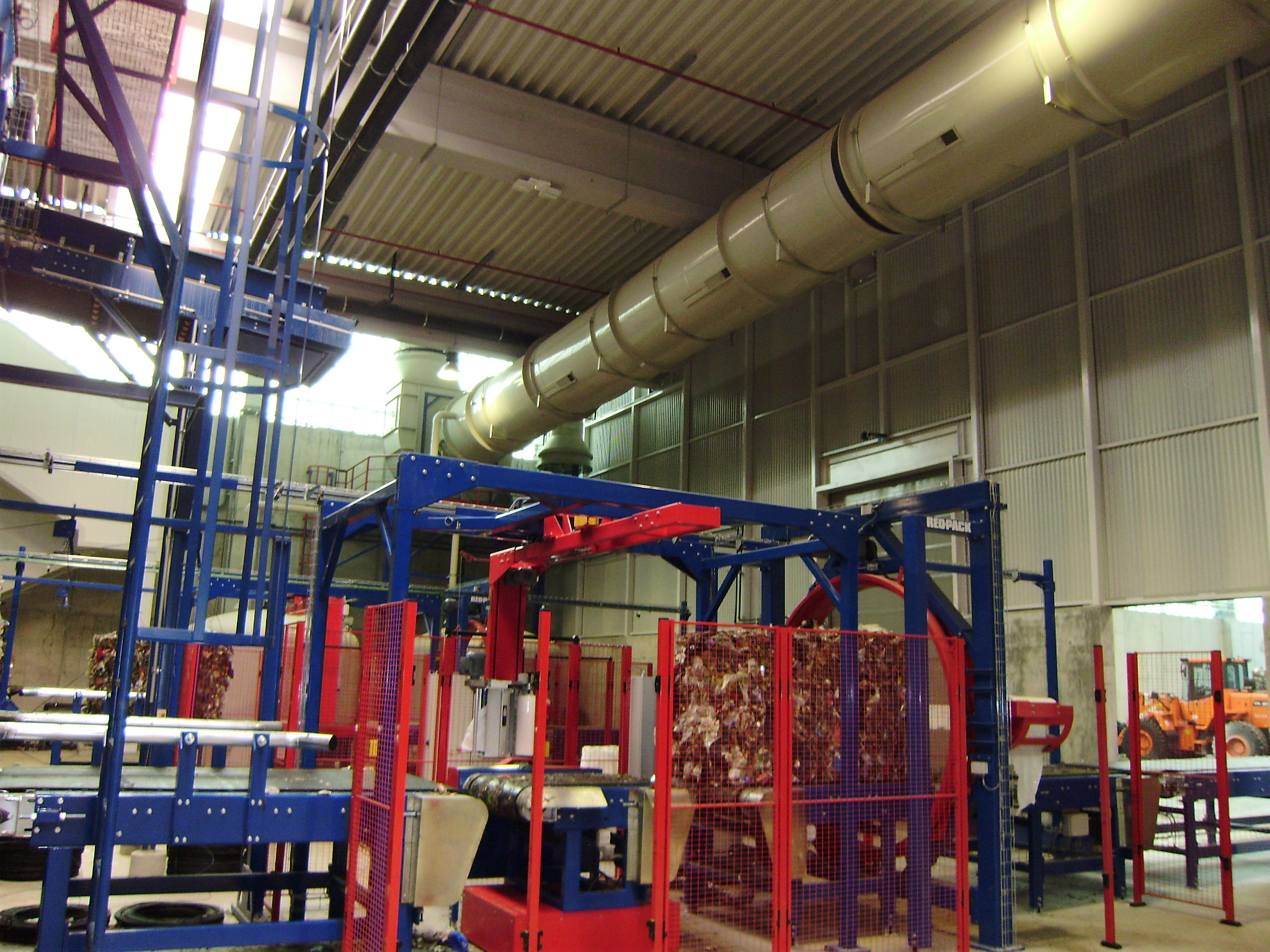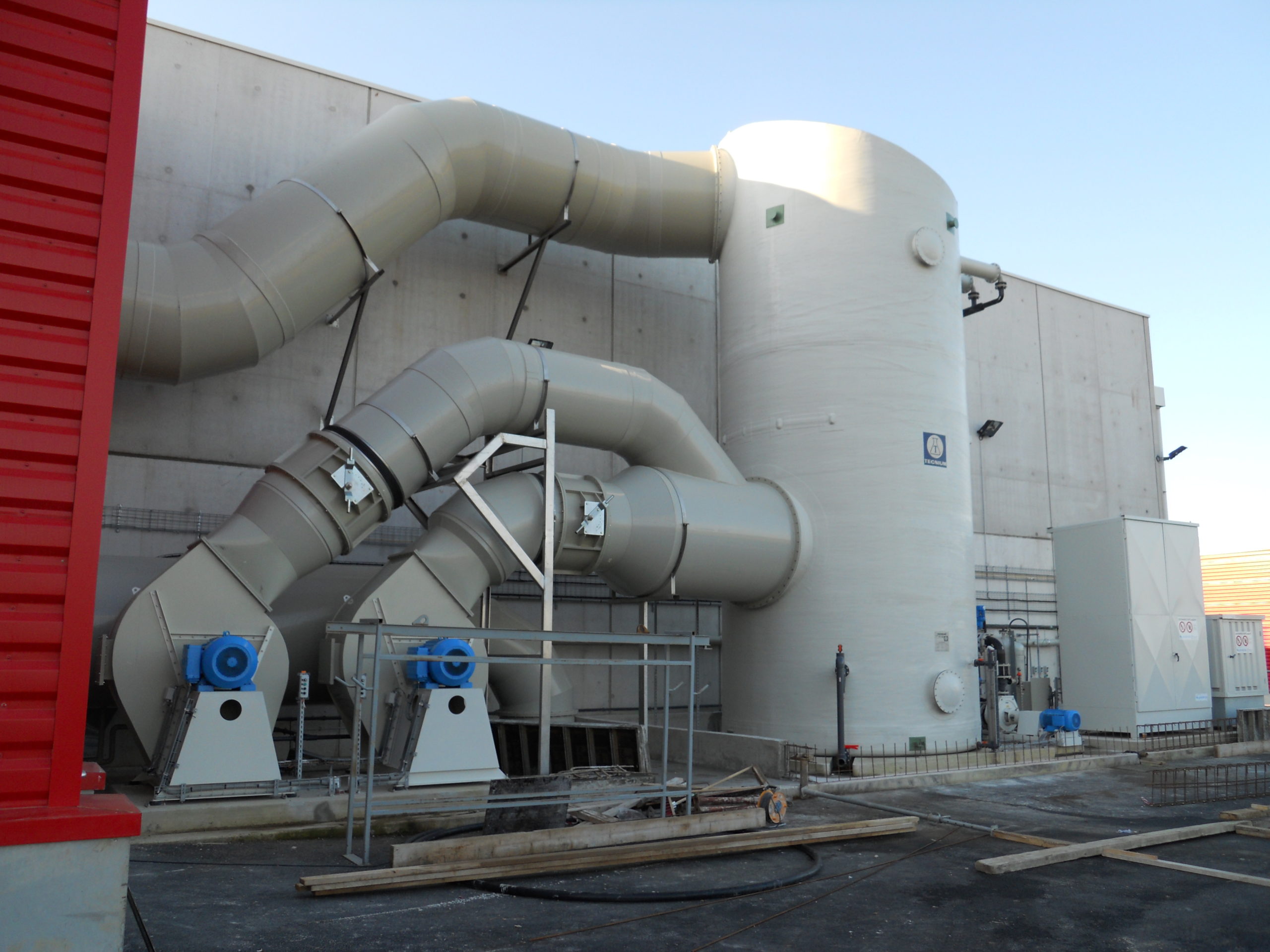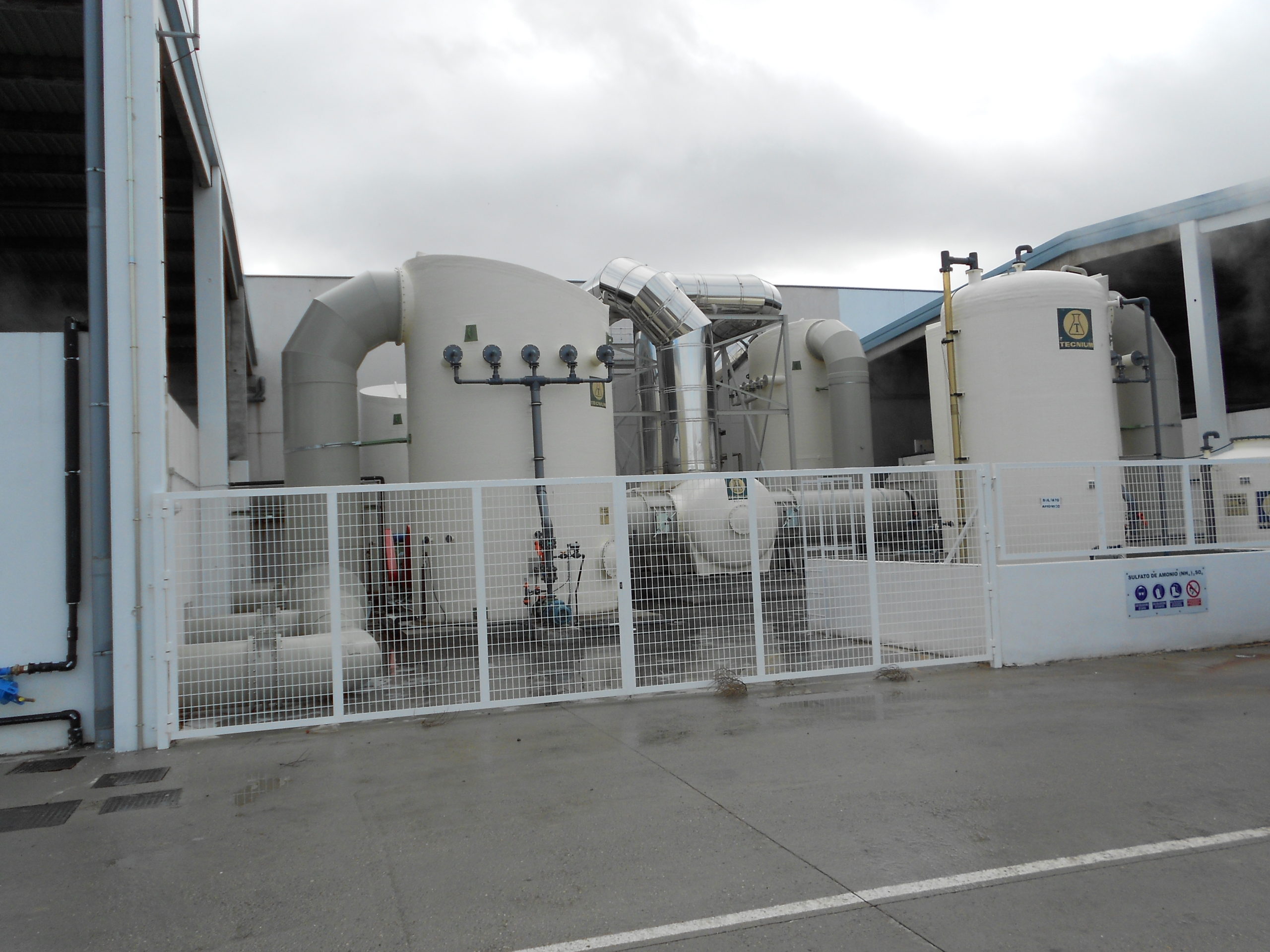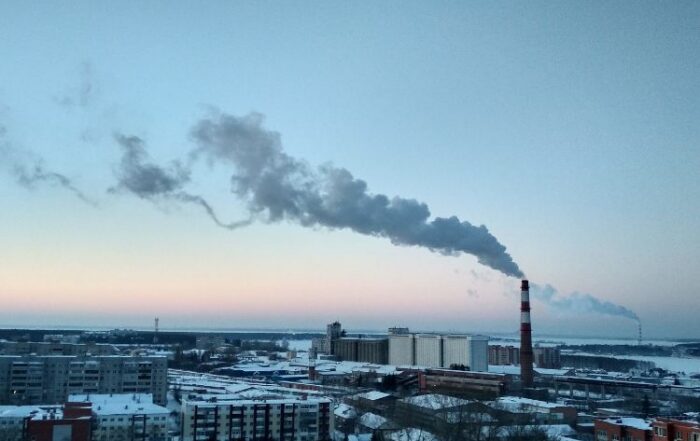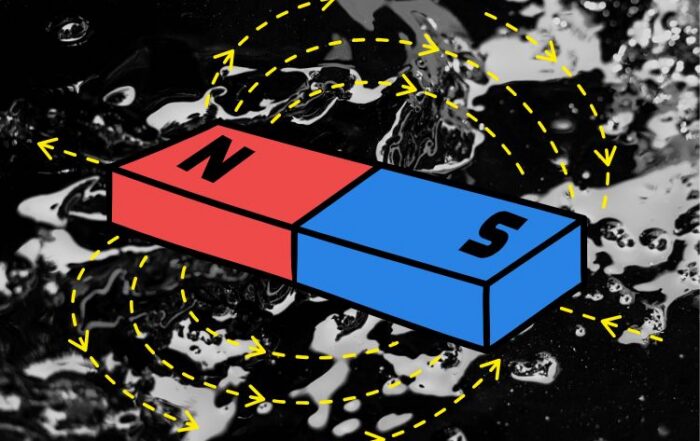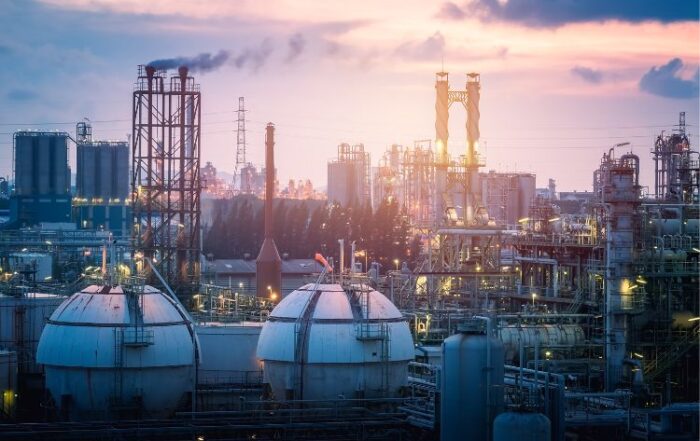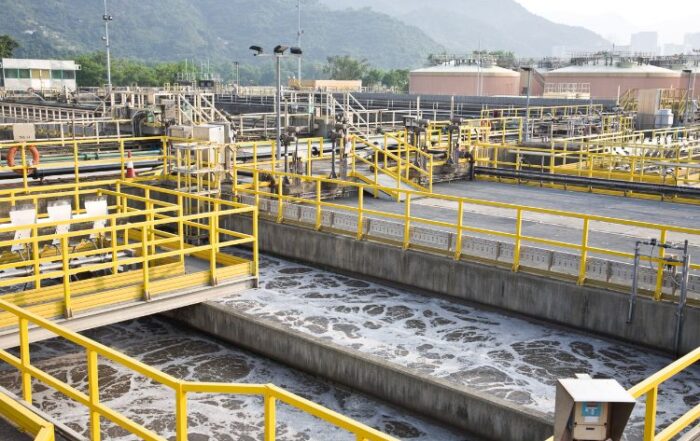
Odour Control on MBT Plants
TECNIUM develops the engineering and provides the necessary equipment for Air Treatment and Odor Control installations in MBT plants, producing composting or biogas.
Several international references of capacities up to 350,000 Tm/year and air flows up to 500,000 Nm3/h per installation backup our experience.
These plants, from air treatment point of view, can be divided into several parts according to composition and concentration of pollutants:
A- Pretreatment Zone (Reception, Classification and Feeders):
The air collected in these areas are considered of LOW LOAD (low NH3 contain) and can be extracted from local intakes or room intakes.
Treatment consists of humidification stage followed by organic biofilter systems.
If the presence of pollutants in these air flows is very low, these aire can be used as refresh air for fermentation zone.
B- Fermentation Zone
The organic fraction coming out from pretreatment can be treated 2 ways:
B.1. Aerobically to produce “compost” with different technologies using tunnels, trenches, solar drying (sludge drying), bucket wheel.
In this case, the gaseous emissions are considered HIGH LOAD with important presence of NH3 and the solution to treat them requires the use of acidic scrubbers, humidification and organic/inorganic biofilters.
B.2. Anaerobic digesters, if this case biogas is generated and used to produce electrical power. The residual sludge coming out from digesters is then stabilized and an odor control unit similar to previous one is required.
C- Maturation and Screening Zones
Finally, the compost is stabilized in the maturation area subsequently passing the refining area where the thick fraction is removed.
The air collection is usually done by room intakes and is considered of LOW LOAD, receiving a similar treatment as to pretreatment.
Advantages
- Optimization of air intakes (room changes or dynamical air movement) in order to minimize total air flow to be treated.
- Close/open/modular organic/inorganic biofilter, discharing directly to the atmosphere or trough stack.
- Turn-key projects
- Removal efficiencies over 99%
- Complete automation and Ethernet link
- Maintenance Contracts
Type of used biomedia:
- Organic type Biomix
- Organic type Pine Cork
- Inorganic type Expanded Structured Clay
More information
Give us your contact details and we will advise you on the best solution for your application
View also
How Gas Scrubbing Technologies Will Drive Decarbonisation in the Chemical Sector
Decarbonisation as the Urgent Challenge for the Chemical Industry The chemical industry is entering one of the most transformative decades in its history. As regulatory pressure intensifies and global climate targets advance, [...]
Tecnium to attend PCH Meetings 2025 in Lyon
Leading Innovation in Chemical Process Equipment Tecnium will participate in the 21st edition of PCH Meetings, the leading international business convention for process, chemical, petrochemical, and pharmaceutical industries, to be held on [...]
Magnetic Drive Pumps: The Science Behind Leak-Free Chemical Transfer
Why Magnetic Drive Technology Matters In industrial environments where safety, reliability, and chemical containment are critical, even a small leak can have major consequences. Traditional centrifugal pumps, which rely on mechanical seals [...]
Biofiltration for Air Pollution Control
Introduction to Biofiltration and Air Pollution Control Air pollution control is a persistent challenge across multiple industries — from wastewater treatment to chemical manufacturing, food processing, and beyond. As regulations grow stricter [...]
ECHA 2025 Report
Why the ECHA 2025 Report Matters The European Chemicals Agency (ECHA) plays a central role in regulating the safe use of chemicals across the European Union. Through its guidance, risk assessments, and [...]
A Key Element for Environmental Protection in WWTPs
Why Gas and Odour Emissions in WWTPs Are an Environmental Issue Wastewater treatment plants (WWTPs) play a critical role in safeguarding public health and the environment. However, the treatment process itself can [...]

